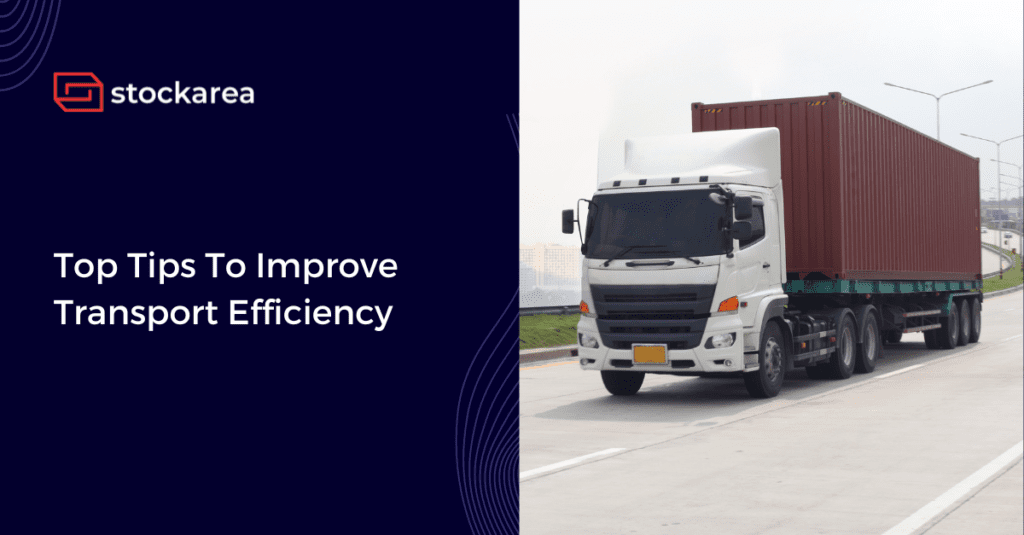Transportation is a crucial component of the logistics industry. It enables businesses to transport goods and services quickly, effectively, and affordably to their destination. Taking the appropriate measures to increase transport efficiency can help companies increase their profits and minimise costs, reduce delivery times, improve customer service levels and overall customer satisfaction. There are a variety of methods by which businesses can increase transport efficiency. These include strategies such as improving the design of transport systems, investing in technology, developing optimal transport routes and emphasising superior customer service.
1. Implement TMS
Implementing a Transport Management System (TMS) will facilitate the streamlining of supply chain activities. With the aid of a TMS, businesses can gain visibility into their transport operations, enabling them to identify areas for improvement and improve their efficiency. By automating tasks, a TMS can also help businesses reduce transportation-related expenses, such as fuel costs, labour costs, and administration costs. TMS enables businesses to balance workloads, assign available resources to orders automatically, and monitor the status of shipments in transit.
TMS makes it easier to automate the documentation process. Automation of documentation processes can help to improve accuracy and reduce errors by speeding up the time it takes to process a shipment. This can consequently reduce the time it takes to deliver goods to their buyers and lead to a more efficient transport operation.
2. Outsource to 3PL
The services offered by third-party logistics providers (3PLs) range from storage and transportation to inventory management and order fulfilment. Outsourcing can improve transport efficiency and reduce logistics management costs. By outsourcing the transportation process, businesses can reduce overhead expenses related to personnel and vehicles while increasing delivery speed and efficiency. In addition, 3PLs typically provide more experienced personnel, enabling them to determine which vehicles and routes will be the most effective for a particular job.
3. Route Optimisation
Route optimisation allows transportation companies to plan the most efficient route between the warehouse or distribution centre and their final destination. It also will enable businesses to optimise routes based on factors like speed, distance, and fuel economy. By optimising the route, transport companies can reduce the time taken to travel between points, leading to faster delivery.
4. Streamline Loading Process
Loading a truck optimally can significantly reduce fuel consumption, save time, and minimise the risk of damage to goods during transit. By segmenting orders into specific types and assigning them to the most relevant shipment, movement inefficiencies can be avoided depending on factors such as delivery dates, order size, and distance. Optimising the size and weight of the shipment and maximising the vehicle’s space are essential considerations when optimising truck loads. Companies can also utilise technology such as load-matching software that helps to identify the best-suited driver and truck for a given load.
5. Fuel Efficient Vehicles
Fuel-efficient vehicles are designed to use less fuel than their traditional counterparts. This is achieved through advanced technologies such as improved engines, lightweight materials, and aerodynamic designs. Using these technologies, fuel-efficient vehicles can reduce fuel consumption and emissions while still providing the same level of performance. By reducing fuel costs and emissions, fuel-efficient vehicles will be able to transport goods more quickly, which will reduce waiting times and improve customer satisfaction. Finally, fuel-efficient vehicles will also increase the efficiency of fleets. By reducing fuel consumption, fleets will be able to reduce their maintenance costs and fuel and labour costs.
6. Fleet Management
Improving transportation efficiency begins with managing your fleet of vehicles better. Fleet management involves keeping an eye on the effectiveness of drivers and their routes, as well as vehicle maintenance, fuel consumption, and costs related to the fleet. By improving fleet management, businesses can reduce costs, lower wait times and increase productivity and increase customer satisfaction. Improved fleet management can also help to reduce the number of accidents that occur. By using advanced safety systems, such as lane departure warnings and blind spot monitoring, businesses can help to reduce the risk of accidents.
7. Consolidate Shipments
Consolidating shipments refers to the practice of grouping together smaller shipments to form a larger one, which is then transported as a single unit. This can improve transport efficiency by reducing the number of trips required to transport all the goods and by making better use of available cargo space. Consolidation can also lead to cost savings, as the larger shipment can often be shipped at a lower cost per unit than the smaller individual shipments.
Conclusion
To conclude, improving transport efficiency in logistics is a complex task which requires a multi-pronged approach to reducing transport costs and time, improving customer satisfaction and enhancing overall logistics operations. Businesses should invest in the latest software and technologies, pay close attention to individual orders and shipments, and consider ways to automate the tasks of the supply chain.
Related posts
- 7 Latest Technologies Changing The Trucking Industry
- Top 11 Trucking Industry Trends In 2024
- 10 Must-Have Transport Management System Features
- 7 Major Challenges Of The Trucking Industry
- 6 Most Important Facts Of Trucking Industry
- 5 Key Benefits Of Hiring Trucking Company For Logistics
- 7 Key Functions Of Logistics Company
- What Is Reverse Logistics?
- What Is Transportation Management System?
- 15 Best Courier Services Companies In India
- 10 Key Benefits Of Transportation Management System (TMS)
- 7 Steps To Choosing The Right Courier Partner
- How To Start Logistics Business In India
